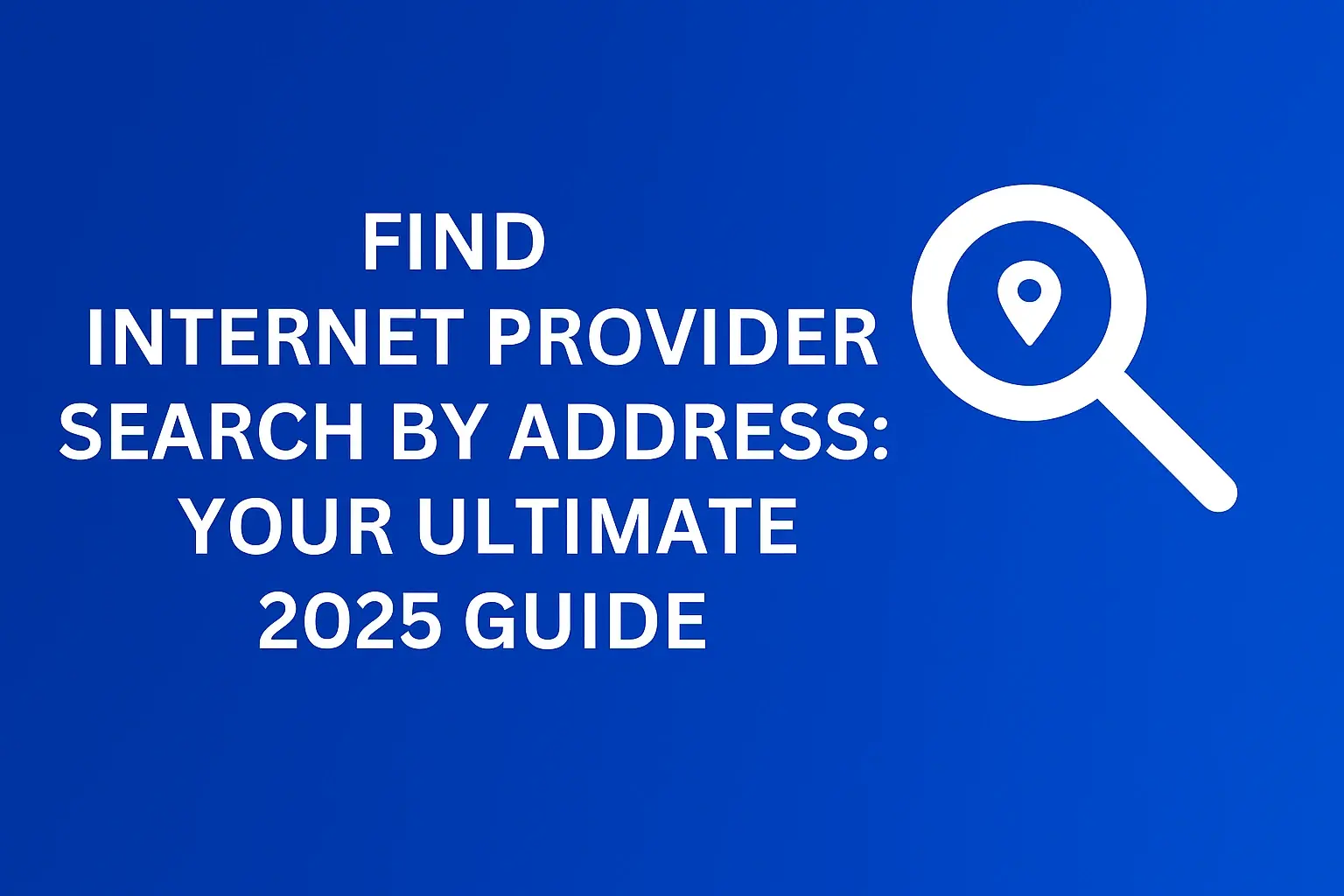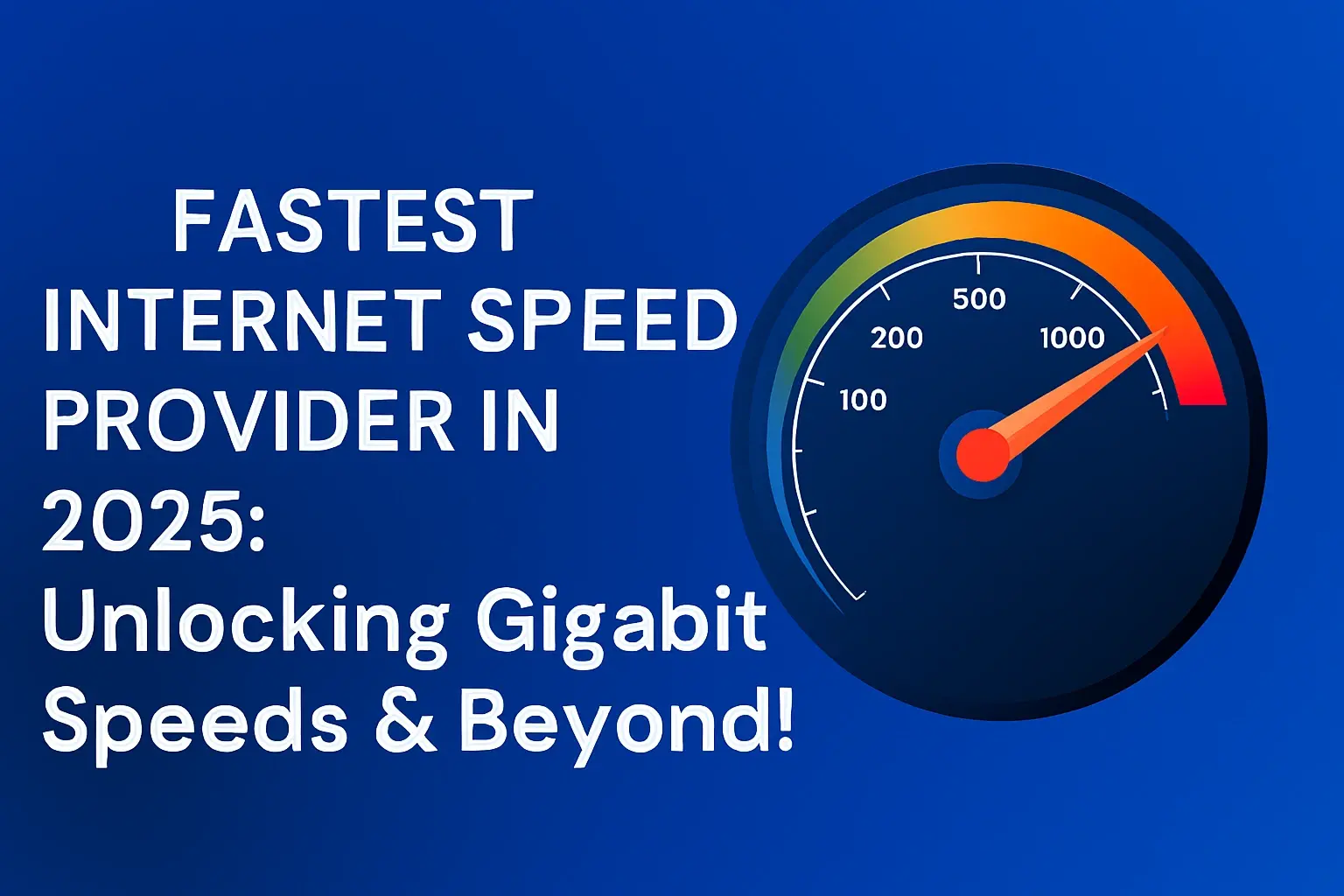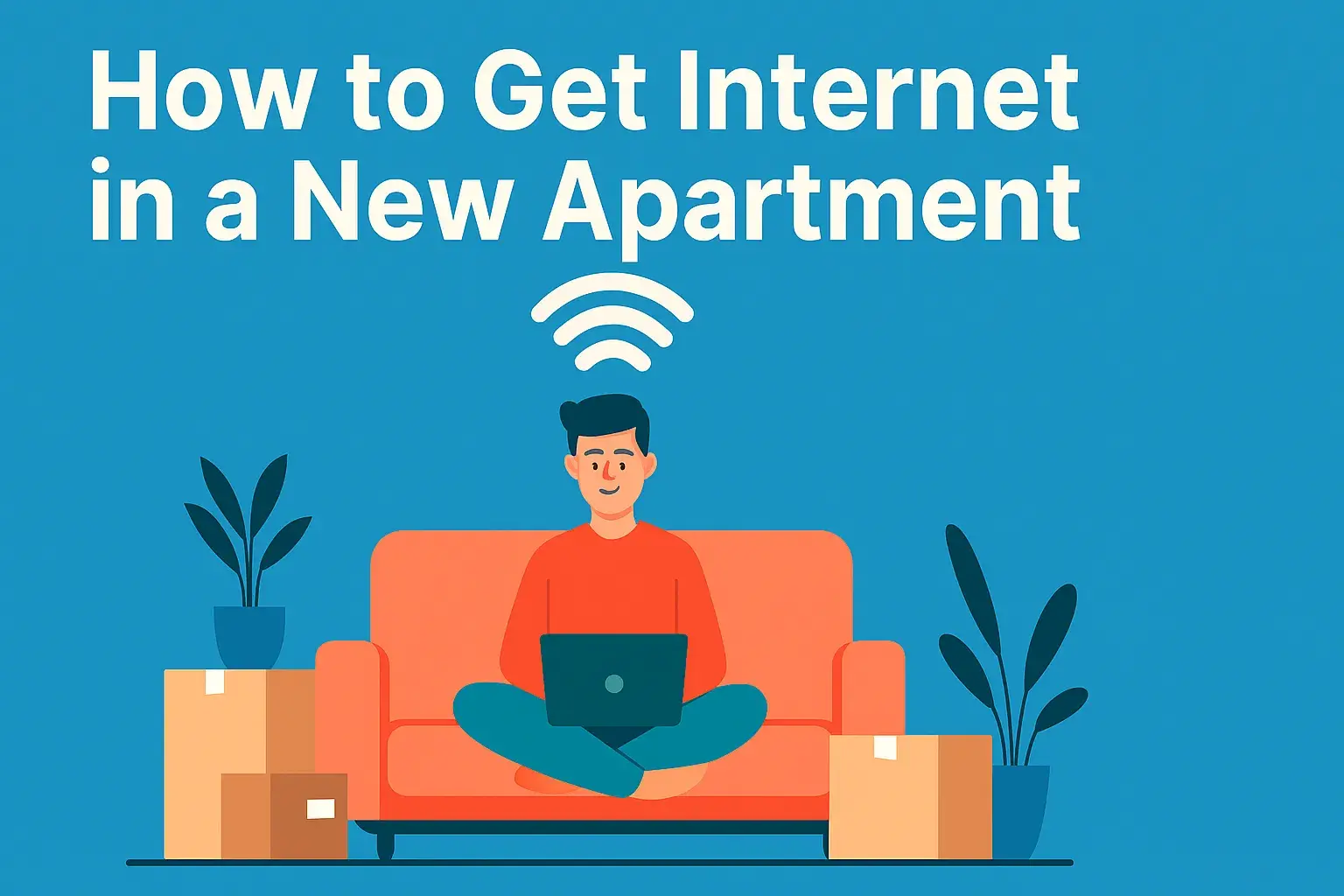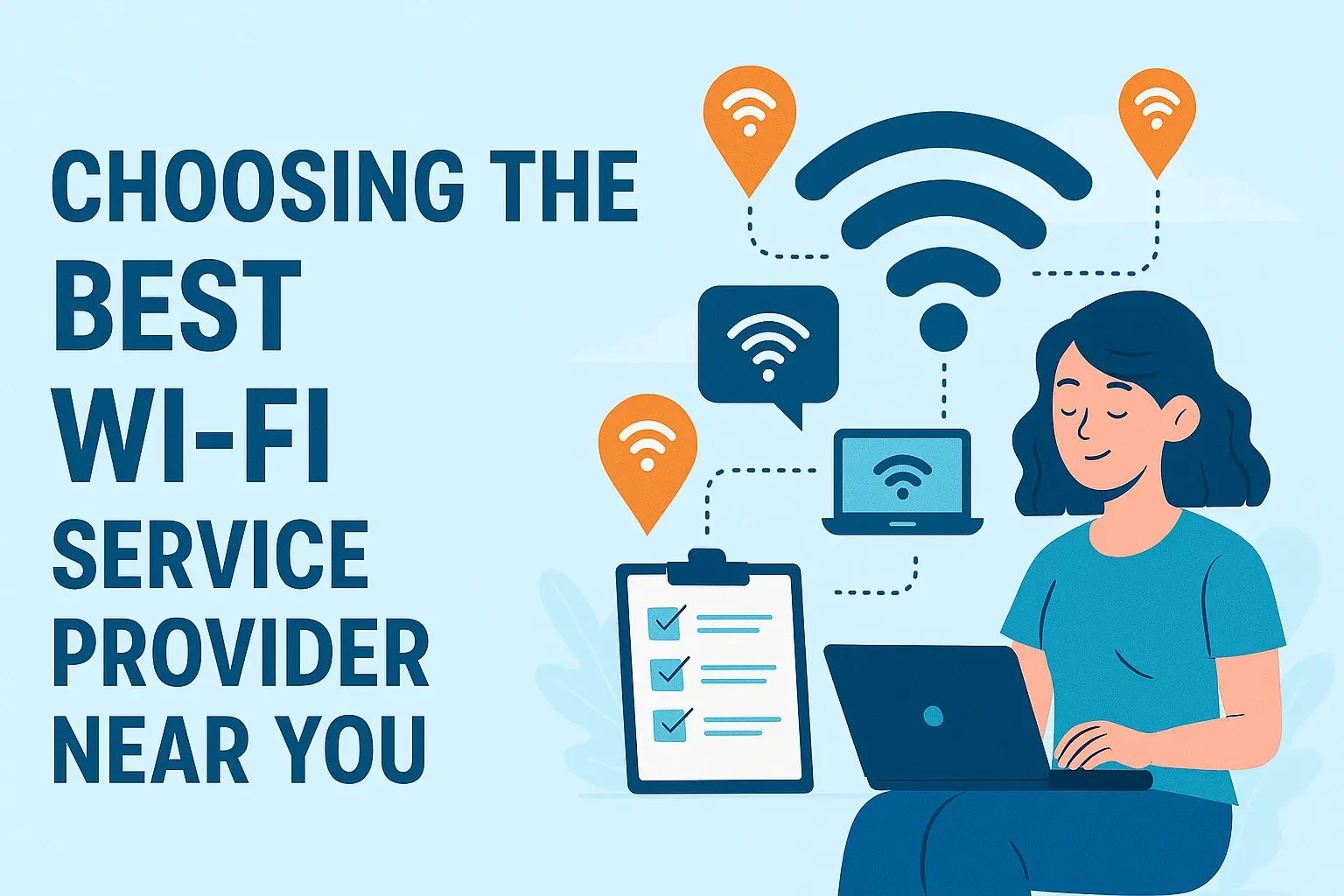How To Choose An Internet Service Provider (2024 Guide) ?

Navigating the complex world of internet service providers (ISPs) can feel overwhelming. This comprehensive 2025 guide will equip you with the knowledge to confidently choose the best ISP for your needs, ensuring speed, reliability, and affordability. We break down the key factors, technologies, and questions to ask.
Understanding Internet Connection Types
The type of internet connection available in your area is the foundational element of your choice. Each technology offers distinct advantages and disadvantages in terms of speed, reliability, and cost. As of 2025, the most prevalent and emerging technologies include:
1. Fiber Optic Internet
Fiber optic internet is the gold standard for speed and reliability. It uses thin strands of glass or plastic to transmit data as pulses of light. This method allows for incredibly fast download and upload speeds, often symmetrical (meaning upload speeds match download speeds), which is crucial for video conferencing, large file uploads, and online gaming. Fiber is also less susceptible to interference and degradation over distance compared to other technologies. While it offers the best performance, it's not yet available in all areas, and installation can sometimes be more involved.
Pros:
- Extremely high speeds (up to 10 Gbps and beyond)
- Symmetrical upload and download speeds
- High reliability and stability
- Resistant to electromagnetic interference
- Future-proof technology
Cons:
- Limited availability, especially in rural areas
- Can be more expensive than other options
- Installation might require more complex work
2. Cable Internet
Cable internet utilizes the same coaxial cables that deliver cable television. It's a widely available and popular choice, offering a good balance of speed and affordability for most households. Speeds have significantly improved over the years, with many providers now offering plans exceeding 1 Gbps. However, cable internet is a shared medium; if many users in your neighborhood are online simultaneously, your speeds might fluctuate. Upload speeds are typically much slower than download speeds.
Pros:
- Wide availability
- Good download speeds, often exceeding 1 Gbps
- Relatively affordable
- Bundling options with TV services
Cons:
- Shared bandwidth can lead to speed fluctuations
- Upload speeds are generally much lower than download speeds
- Performance can be affected by network congestion
3. DSL (Digital Subscriber Line) Internet
DSL internet uses existing telephone lines to transmit data. It's generally slower than cable or fiber, with speeds varying greatly depending on your distance from the provider's central office. While it's widely available, its performance is often outmatched by newer technologies. DSL is best suited for users with basic internet needs, such as email, web browsing, and occasional streaming, especially in areas where other options are limited.
Pros:
- Very wide availability, especially in rural areas
- Can use existing phone lines
- Often more affordable than cable or fiber
Cons:
- Significantly slower speeds compared to fiber and cable
- Performance degrades with distance from the central office
- Upload speeds are very low
- Not ideal for heavy internet users or multiple devices
4. 5G Home Internet
5G home internet is a relatively new and rapidly expanding technology that uses cellular networks to provide internet service to your home. It leverages the high-speed capabilities of 5G wireless technology. For many, it offers a compelling alternative to traditional wired connections, especially in areas where wired infrastructure is lacking or outdated. Speeds can be competitive with cable, and it often comes with simpler setup and no data caps. However, availability is still growing, and performance can be affected by signal strength and network congestion.
Pros:
- Potentially fast speeds, competitive with cable
- Easy setup, often plug-and-play
- No data caps on many plans
- Good alternative in areas with poor wired options
Cons:
- Availability is still limited and expanding
- Performance can vary based on signal strength and location
- Can be susceptible to network congestion
- Upload speeds might not be as high as download speeds
5. Satellite Internet
Satellite internet is typically the last resort for internet connectivity, primarily serving extremely remote areas where no other options exist. It works by transmitting data between your home and a satellite orbiting Earth. While it has improved, satellite internet is known for its high latency (delay), which makes real-time applications like online gaming and video conferencing difficult. Speeds can also be inconsistent, and data caps are common and often restrictive.
Pros:
- Available in virtually any location
- Can be the only option for very remote areas
Cons:
- High latency makes real-time applications challenging
- Speeds can be inconsistent and slower than other options
- Data caps are often restrictive and costly to exceed
- Weather can significantly impact performance
Assessing Your Household's Internet Needs
Before you start comparing ISPs, it's crucial to understand how your household uses the internet. This self-assessment will help you determine the necessary speed, data allowance, and features you'll need. Consider the following questions:
How many people use the internet in your household?
A single user browsing the web has vastly different needs than a household of five, with multiple people streaming, gaming, and working from home simultaneously. The more users and devices, the higher the bandwidth requirement.
What are your primary internet activities?
- Basic Use (Email, Browsing, Social Media): Lower speeds (10-25 Mbps) and smaller data plans may suffice.
- Streaming (Netflix, Hulu, YouTube): HD streaming typically requires at least 5-10 Mbps per stream. 4K streaming demands 25 Mbps or more per stream. Multiple streams will significantly increase this need.
- Online Gaming: Requires stable, low-latency connections. Speeds of 25-50 Mbps are generally recommended, but consistent ping is more critical than raw download speed.
- Video Conferencing (Zoom, Teams): HD video conferencing requires about 3-4 Mbps for download and 1-2 Mbps for upload per call. Multiple simultaneous calls will increase these needs.
- Working from Home (Large Files, Remote Access): May require higher speeds, especially for uploading large files or using VPNs. Symmetrical speeds are highly beneficial here.
- Smart Home Devices: While individual devices use minimal bandwidth, a large number of connected devices can contribute to network strain.
How many devices will be connected simultaneously?
In 2025, it's common for households to have dozens of connected devices, including smartphones, tablets, laptops, smart TVs, gaming consoles, smart speakers, thermostats, and security cameras. Each device consumes some bandwidth, and many will be active concurrently. Aim for a plan that can comfortably handle your peak usage.
Do you have a data cap or unlimited data preference?
Some ISPs impose monthly data caps, limiting the amount of data you can download and upload. Exceeding these caps can result in extra charges or throttled speeds. If your household streams a lot of video, downloads large files, or plays online games, unlimited data is highly recommended. Fiber and 5G home internet plans often come with unlimited data, while cable and DSL may have caps.
Do you need symmetrical upload and download speeds?
Most residential internet plans offer much faster download speeds than upload speeds. If you frequently upload large files, stream live video, or participate in frequent video conferences, symmetrical speeds (where upload and download are equal) are a significant advantage. Fiber optic internet is the primary technology that offers this benefit.
Key Factors to Consider When Choosing an ISP
Once you understand your needs, you can begin evaluating ISPs based on several critical factors:
Availability in Your Area
This is the most significant limiting factor. Not all ISPs operate in every region, and even within a region, the available technologies (fiber, cable, DSL, 5G) can vary significantly by neighborhood. Your first step should always be to check which providers service your specific address. You can usually do this on the ISP's website.
Speed (Download and Upload)
As discussed, speed is paramount. For 2025, consider these general guidelines:
- Basic Browsing/Email: 10-25 Mbps download
- HD Streaming/Multiple Users: 50-100 Mbps download
- 4K Streaming/Heavy Gaming/Work from Home: 100-300 Mbps download
- Very Heavy Use/Multiple 4K Streams/Large File Transfers: 500 Mbps - 1 Gbps+ download
- Upload Speed: Crucial for video calls, uploading files, and live streaming. Aim for at least 10-20 Mbps upload if these are important activities. Fiber offers the best upload speeds.
Reliability and Uptime
An ISP might offer high speeds, but if the connection is constantly dropping, it's useless. Look for ISPs with a reputation for reliability. Many third-party review sites and consumer reports track ISP uptime statistics. Fiber optic connections are generally the most reliable, followed by cable. DSL and satellite can be more prone to interruptions.
Data Caps
As mentioned, data caps can be a major constraint. Always check the data allowance for any plan you consider. If unlimited data is not standard, understand the cost of exceeding the cap. Many users find that exceeding caps can quickly make a seemingly cheaper plan more expensive than a higher-tier unlimited plan.
Customer Service and Support
When things go wrong, you'll want an ISP with responsive and helpful customer support. Research customer reviews regarding their support channels (phone, chat, email), wait times, and problem resolution effectiveness. Poor customer service can turn a minor issue into a major headache.
Equipment (Modem/Router)
ISPs often require you to use their provided modem and router, or they may charge a monthly rental fee for them. In some cases, you can purchase your own compatible equipment, which can save money in the long run. Ensure the equipment provided or recommended is up to the task for the speeds you're purchasing.
Bundling Options
Many ISPs offer bundles that combine internet, TV, and phone services. While these can sometimes offer savings, always compare the bundled price to purchasing services separately from different providers. Ensure you're not paying for services you don't need.
Promotional Pricing vs. Regular Pricing
Be aware that advertised prices are often introductory or promotional rates that last for a limited time (e.g., 12 or 24 months). After the promotional period, the price will increase significantly. Understand the regular, non-promotional price before signing up.
Comparing ISP Plans and Pricing
With the information above, you're ready to compare specific plans. Here's how to approach it:
Step 1: Identify Available ISPs and Technologies
Use online tools or contact providers directly to see what's available at your address. Prioritize fiber, then cable, then 5G home internet, and finally DSL or satellite if those are your only options.
Step 2: Note Download and Upload Speeds
For each available plan, record the advertised download and upload speeds. Remember that advertised speeds are "up to" and actual speeds can vary. Look for plans that meet or exceed your assessed needs.
Step 3: Check Data Caps
Note whether the plan has a data cap and what the allowance is. If it does, consider if it's sufficient for your usage. If not, look for unlimited data plans.
Step 4: Compare Monthly Costs
Record the monthly cost, paying close attention to whether it's a promotional price or the regular rate. Factor in any equipment rental fees.
Step 5: Understand Contract Lengths
Some plans require a long-term contract (e.g., 1-2 years), while others are month-to-month. Contracts often come with early termination fees if you cancel before the term is up.
Step 6: Research Fees
Look for installation fees, activation fees, equipment fees, and any other hidden charges. These can significantly increase the upfront cost.
Example Comparison Table (Hypothetical - 2025 Data)
Let's imagine three hypothetical ISPs available in your area:
| Feature | ISP A (Fiber) | ISP B (Cable) | ISP C (5G Home) |
|---|---|---|---|
| Technology | Fiber Optic | Cable | 5G Home Internet |
| Advertised Download Speed | 1 Gbps | 500 Mbps | Up to 300 Mbps |
| Advertised Upload Speed | 1 Gbps | 30 Mbps | Up to 50 Mbps |
| Data Cap | Unlimited | 1 TB | Unlimited |
| Promotional Monthly Price (12 months) | $70 | $60 | $50 |
| Regular Monthly Price | $90 | $80 | $70 |
| Contract Length | Month-to-Month | 12 Months | Month-to-Month |
| Installation Fee | $100 (Waived with 2-year commitment) | $50 | $0 |
| Equipment Rental Fee | $15/month (or buy own for $150) | $10/month | $0 |
| Key Benefit | Unmatched speed & reliability | Good balance of speed/cost | Flexibility & no data caps |
| Potential Drawback | Higher regular cost | Shared bandwidth, lower upload | Speed variability, availability |
In this example:
- ISP A (Fiber) offers the best performance but is the most expensive long-term. If symmetrical speeds and ultimate reliability are critical for work, this is the choice.
- ISP B (Cable) offers a good middle ground, but the 1 TB data cap might be a concern for heavy streamers. The 12-month contract also locks you in.
- ISP C (5G Home) is the cheapest upfront and has unlimited data, making it attractive for budget-conscious users with moderate needs. However, its speed is variable and might not be sufficient for demanding tasks.
Understanding Contracts, Fees, and Fine Print
This is where many consumers get caught out. Always read the fine print carefully before signing anything.
Contracts and Early Termination Fees (ETFs)
Many ISPs, especially cable companies, will try to lock you into a 12-month or 24-month contract. While these might offer a lower promotional rate, understand the ETF. If you need to move or find a better deal before the contract ends, you could be liable for hundreds of dollars. Month-to-month plans offer more flexibility but often have slightly higher regular rates.
Installation Fees
This is a one-time charge for setting up your service. It can range from $0 to over $100. Sometimes, these fees can be waived if you commit to a contract or during promotional periods. Ask if the fee can be waived or negotiated.
Activation Fees
Similar to installation fees, this is a charge for activating your service. It's often bundled with installation or modem setup.
Equipment Rental Fees
Most ISPs charge a monthly fee for renting their modem and router. This can add up significantly over time. For example, $10/month for a modem rental means $120 per year. If the ISP allows you to use your own compatible equipment, research the cost of purchasing a good quality modem/router. Ensure it meets the ISP's specifications for the speeds you're subscribing to.
Data Overage Charges
If your plan has a data cap and you exceed it, you'll likely incur overage charges. These can be per gigabyte or a flat fee for exceeding the limit. Understand these costs to avoid surprise bills.
Price Increases After Promotions
This is perhaps the most common "gotcha." Advertised prices are almost always promotional. Be sure you know the regular price after the promotion ends. Some ISPs are transparent about this, while others make it harder to find. Factor the regular price into your long-term budget.
Bundling Disadvantages
While bundling can save money, it can also tie you to services you don't use. If your TV provider also offers internet, and you're happy with your current internet, don't feel pressured to switch just for a bundle discount. Sometimes, the savings aren't as significant as they appear.
Service Level Agreements (SLAs)
While less common for residential customers, business plans often have SLAs guaranteeing uptime and performance. For residential users, understanding the ISP's commitment to service quality is more about reputation and reviews than formal agreements.
Researching ISP Performance and Reliability
Beyond advertised speeds, actual performance and reliability are crucial. Here's how to research:
Third-Party Review Sites
Websites like Consumer Reports, PCMag, CNET, and dedicated internet speed test sites (e.g., Ookla's Speedtest.net) often publish reviews and speed test data from real users. Look for data specific to your region if possible.
Consumer Complaints Databases
Check resources like the Better Business Bureau (BBB) and the Federal Communications Commission (FCC) consumer complaint database. These can reveal patterns of issues with specific ISPs.
Ask Your Neighbors
The best indicator of performance in your immediate area is the experience of your neighbors. If you know someone using an ISP you're considering, ask them about their speeds, reliability, and customer service experiences.
Speed Test Results
When you're ready to test your current internet or after installation, use reputable speed test sites. Run tests at different times of the day (peak and off-peak hours) to get a comprehensive picture of performance. Websites like Speedtest.net are excellent for this.
Latency (Ping)
Latency, often measured as "ping," is the time it takes for data to travel from your device to a server and back. Low latency is critical for online gaming, video conferencing, and other real-time applications. Fiber optic connections generally have the lowest latency.
Jitter
Jitter refers to the variation in latency. High jitter can cause choppy audio and video during calls and can negatively impact online gaming. It's a measure of instability in the connection.
Network Congestion
Cable internet is susceptible to congestion because bandwidth is shared among users in a neighborhood. During peak hours (evenings and weekends), speeds can drop significantly. Fiber optic internet is generally less affected by congestion due to its dedicated nature.
Making the Switch: Installation and Setup
Once you've chosen an ISP, the process of switching usually involves these steps:
Schedule Installation
The ISP will schedule a technician to come to your home to set up the service. This is especially common for fiber and cable installations. For some 5G home internet services, it might be a self-installation process.
Prepare Your Home
Ensure clear access to where the cable or fiber line will enter your home and where you plan to place your modem/router. The technician will need access to exterior entry points and potentially interior wall jacks.
The Installation Process
For wired connections (fiber, cable, DSL), a technician will run a line from the street to your home and install an outlet. They will then connect your modem and router and test the connection. For 5G home internet, you'll typically set up a modem/router device yourself, placing it in a location with good signal strength.
Setting Up Your Wi-Fi Network
After the internet is active, you'll need to set up your Wi-Fi network. This involves choosing a network name (SSID) and a strong password. If you're using the ISP's provided router, it will guide you through this process. If you're using your own equipment, consult its manual.
Testing Your Connection
Once everything is set up, perform a speed test to ensure you're getting the speeds you're paying for. Test at different times of the day and from various locations in your home to assess Wi-Fi coverage.
Canceling Your Old Service
Remember to cancel your old internet service after your new service is fully operational and confirmed to be working. Be aware of any contract end dates or cancellation policies with your previous provider to avoid overlapping charges or unexpected fees.
Troubleshooting Common ISP Issues
Even with the best ISP, you might encounter issues. Here are common problems and solutions:
Slow Speeds
- Check your speed test results: Run tests at different times and locations.
- Restart your modem and router: Unplug them for 30 seconds, then plug them back in.
- Check for network congestion: If you have cable internet, speeds may be slower during peak hours.
- Too many devices: Disconnect some devices to see if speeds improve.
- Wi-Fi signal issues: Move your router to a central location or consider a Wi-Fi extender.
- Contact your ISP: If speeds remain consistently low, there might be an issue with their equipment or line.
Intermittent Connection Drops
- Check cable connections: Ensure all cables are securely plugged into the modem, router, and wall outlet.
- Restart modem/router: This often resolves temporary glitches.
- Check for interference: Other electronic devices can sometimes interfere with Wi-Fi signals.
- ISP outage: Check your ISP's website or social media for reported outages in your area.
- Faulty equipment: Your modem or router might be failing.
- Contact your ISP: They can diagnose line issues or equipment problems.
No Internet Connection
- Check modem/router lights: Look for indicator lights that signal a connection (usually labeled "Internet," "Online," or "WAN"). Consult your device manual.
- Restart modem and router: This is the first and most common fix.
- Check physical connections: Ensure all cables are firmly connected.
- ISP outage: Verify if there's a known outage in your area.
- Contact your ISP: If all else fails, they can guide you through further troubleshooting or dispatch a technician.
Wi-Fi Issues (Weak Signal, Dead Spots)
- Router placement: Position your router in a central, open location, away from obstructions and other electronics.
- Router firmware: Ensure your router's firmware is up to date.
- Wi-Fi extender or mesh system: For larger homes or areas with weak signals, consider adding a Wi-Fi extender or a mesh Wi-Fi system.
- Channel interference: Your router might be on a crowded Wi-Fi channel. You can often change this in your router's settings.
By systematically addressing these common issues, you can often resolve problems without needing to contact your ISP, saving you time and frustration. However, don't hesitate to reach out to their support if you can't resolve the problem yourself.
Conclusion
Choosing the right internet service provider in 2025 requires a thoughtful approach that balances your household's needs with the available technologies and provider offerings. By understanding the different internet types—fiber, cable, DSL, and 5G—and critically assessing your usage patterns, you can make an informed decision. Prioritize speed, reliability, and data allowances, but never overlook the importance of researching customer service, understanding contract terms, and scrutinizing all fees. Always read the fine print and compare promotional pricing against regular rates to avoid unexpected cost increases. Your internet connection is a vital utility, and taking the time to select the best ISP will ensure a seamless, fast, and reliable online experience for years to come. Don't settle for less than what you need and deserve.





